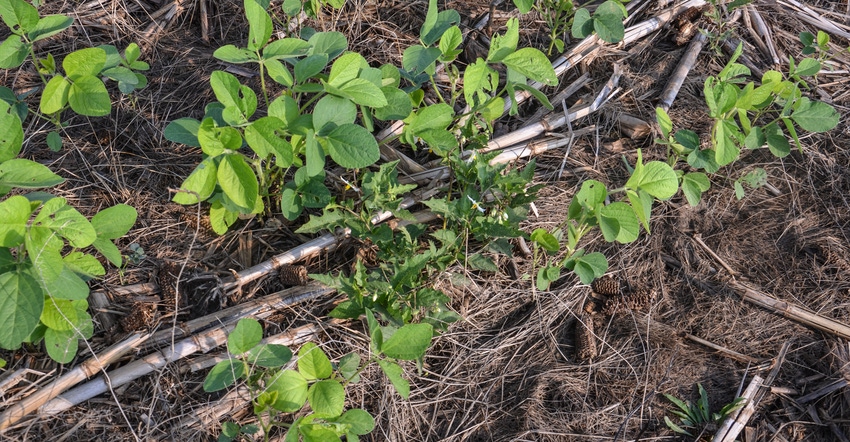
Here is a scenario that happens more frequently than you might think. Fred Whitford hopes you have not found yourself in this predicament. Whitford is director of Purdue University Pesticide Programs.
First, assume you sprayed herbicides your dealer recommended. You didn’t read the label because you figured if it was important, the dealer would have told you. He didn’t mention surfactants or crop oil, so you didn’t add them. You sprayed postemergence products, and within a few days some weeds are wilting and dying. But you don’t get full control — certainly not the performance you expected. Is it time to cross that product off your list of options?
“It would be time to read the label first,” Whitford says. “There may be nothing wrong with the product.
“In fact, the best time to read the label was before you opened the herbicide container and added it to your sprayer tankmix. It’s possible that to get maximum performance from the product, you needed to add a surfactant or crop oil.”
What surfactants do
Herbicides kill weeds, not surfactants or crop oil. So why does weed control efficiency sometimes boil down to whether you add surfactants or crop oil?
“What surfactants and/or crop oil do is make water ‘wetter,’” Whitford explains. “Leaves of many weeds you’re trying to control have a waxy layer on the outside. For the herbicide to work, the active ingredient must get inside the leaf. Crop oil can help penetrate the waxy surface and make it easier for herbicide molecules mixed in water to get inside the plant.”
While it’s not rocket science, it’s important enough that a reminder before each spraying season is prudent, Whitford believes. It was one of the tips he passed along to audiences this year at pesticide applicator training sessions.
If you’ve gone to the trouble of selecting the product you think will work best on weeds and shelled out the money for that herbicide or herbicide mixture, it only makes sense to follow directions specified on the label, Whitford adds. If it’s recommended, adding a surfactant or crop oil is a cheap investment compared to the cost of the herbicide or your investment in the sprayer.
Some people prefer to not use surfactants or crop oil, or contend they don’t work well in their spraying systems. “If that’s the case, then choose a different herbicide product or products which don’t require adding surfactants,” Whitford says. “It’s that big a deal with certain products. It can make a difference between so-so control and excellent weed control.”
New dicamba herbicides for dicamba-tolerant soybeans specifically don’t allow use of certain surfactants with the products. The additive most often singled out is ammonium sulfate. If the label doesn’t say it’s OK to add a certain surfactant or crop oil, that’s also in your best interest, Whitford says.
“The bottom line is that if a herbicide label says you need a surfactant or an oil adjuvant, add it,” he concludes.
About the Author(s)
You May Also Like




